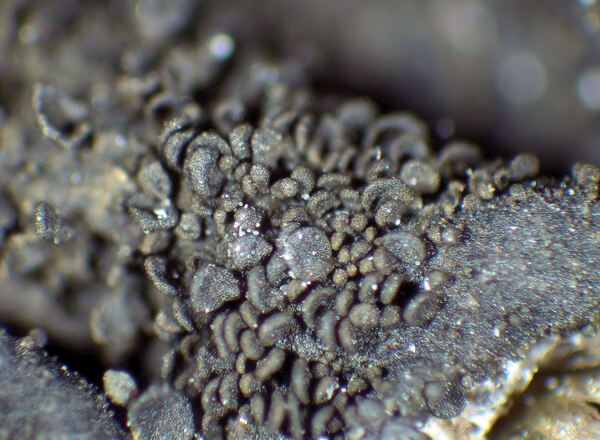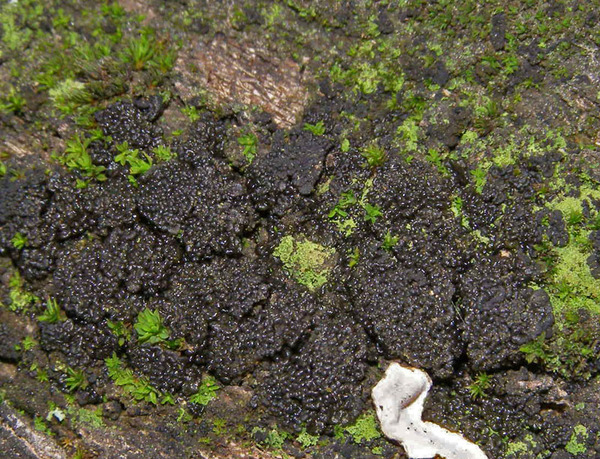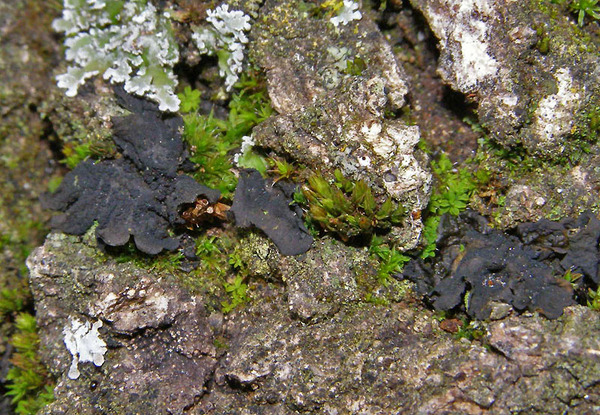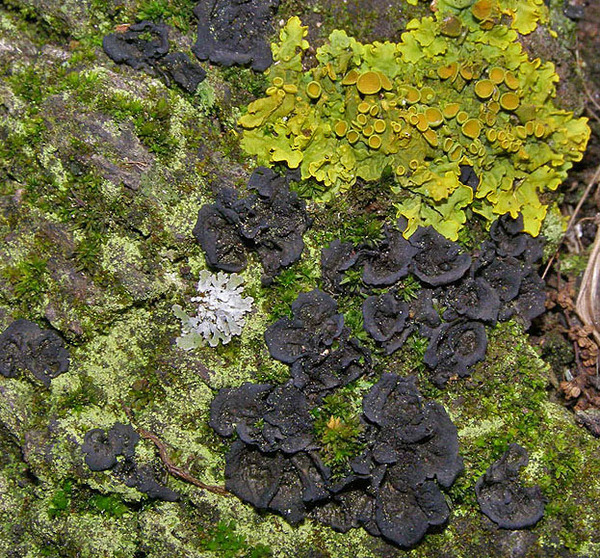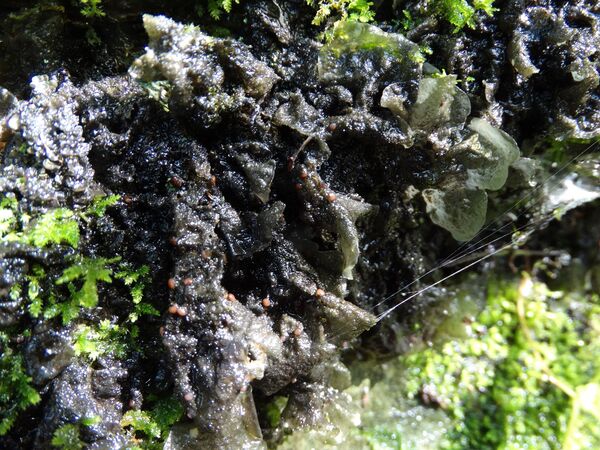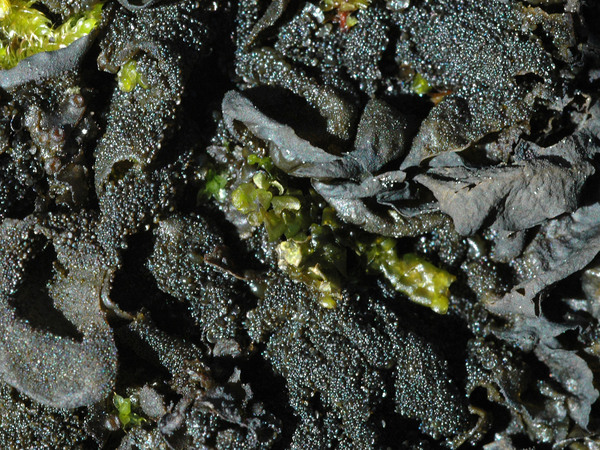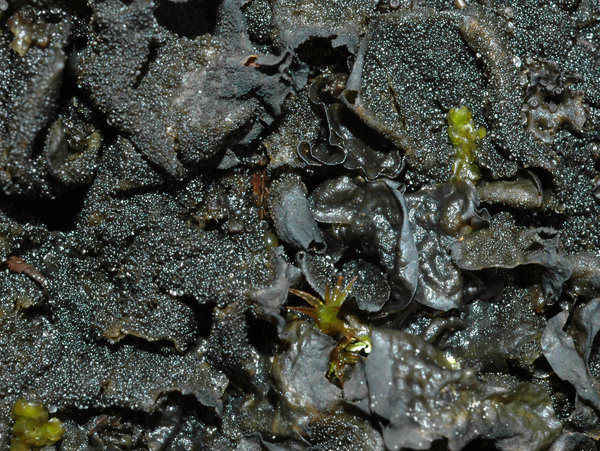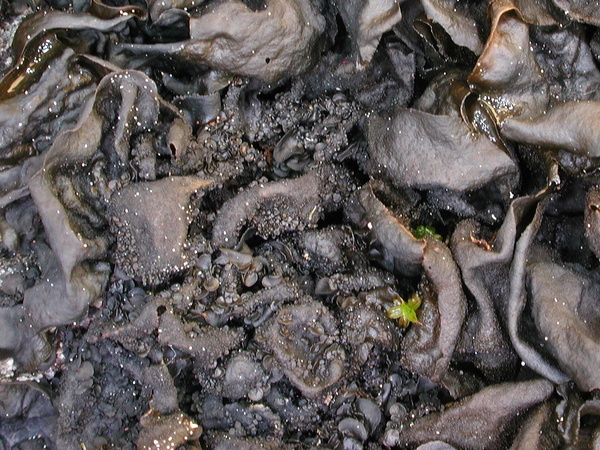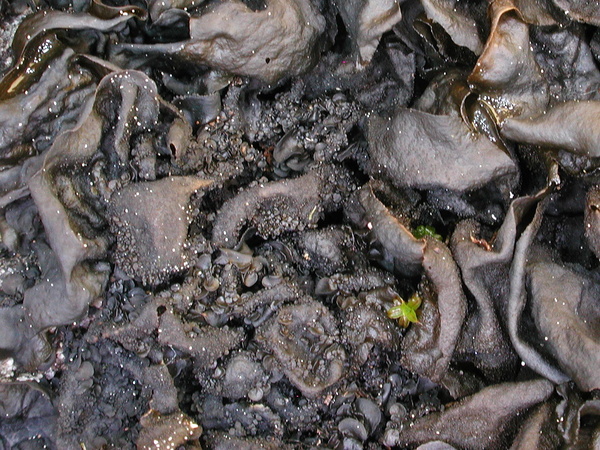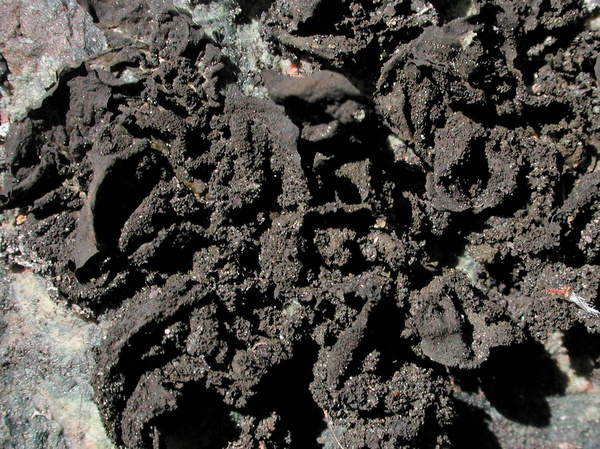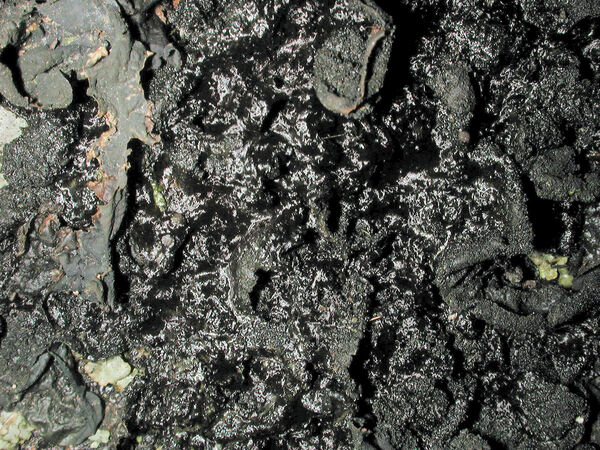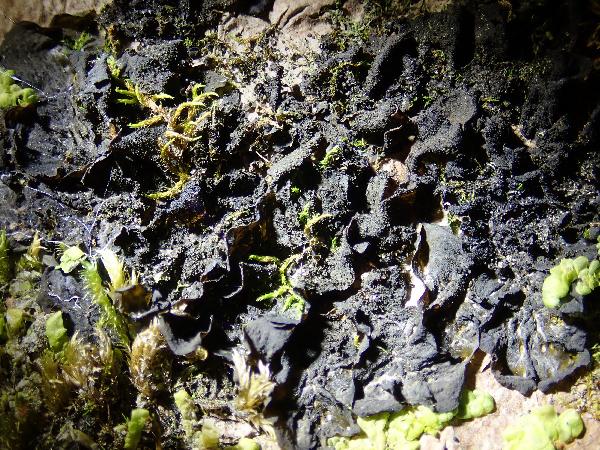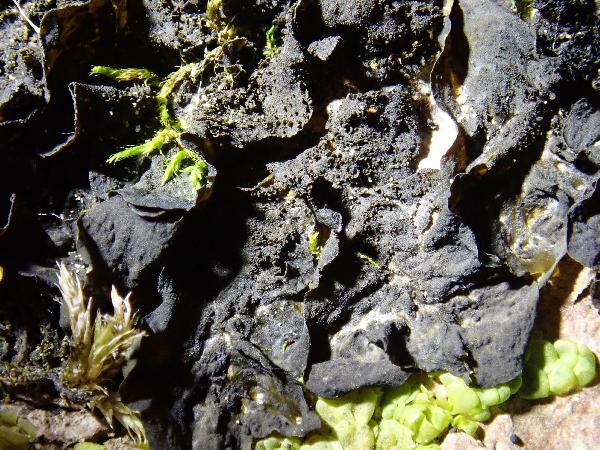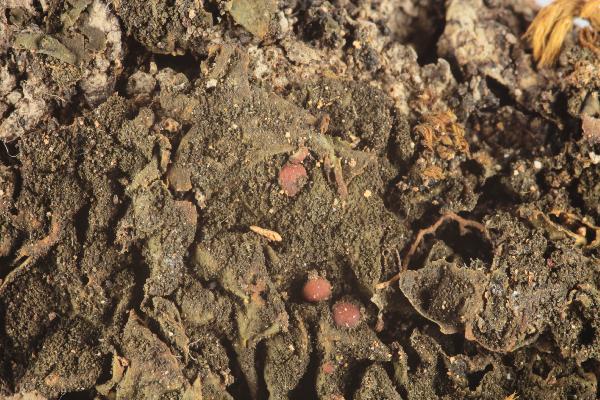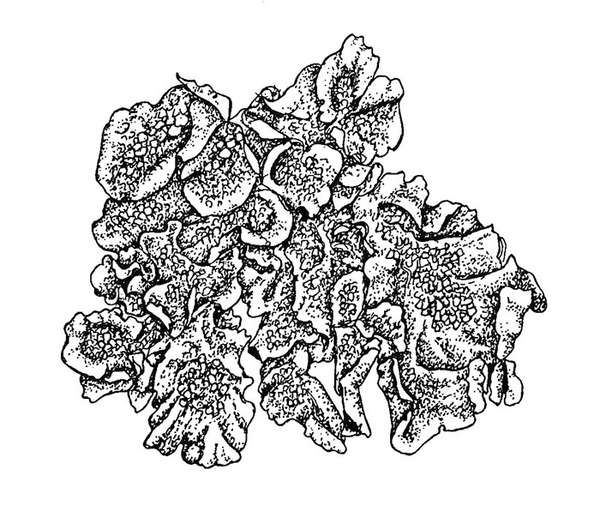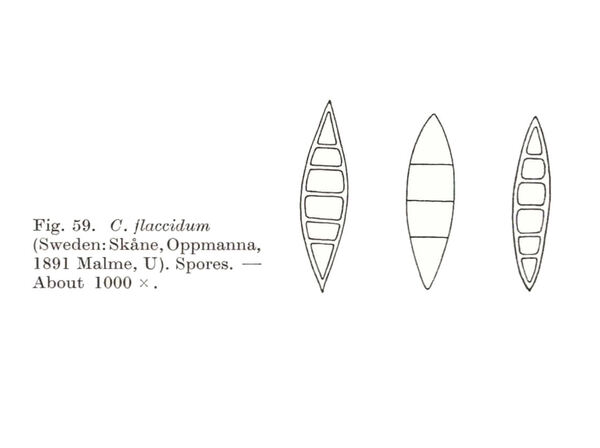Collema flaccidum (Ach.) Ach.
Lichenogr. Univ.: 647, 1810. Basionym: Lichen flaccidus Ach. - K. Vetensk.-Akad. Nya Handl., 16: 14, 1795.
Synonyms: Collema atroplumbeum Hue; Collema furvum var. flaccidum (Ach.) Spreng.; Collema rupestre (Sw.) Rabenh.; Lathagrium rupestre (Sw.) A. Massal.; Lichen rupestris Sw. nom. illegit.; Parmelia flaccida (Ach.) Ach.; Synechoblastus flaccidus (Ach.) Körb.; Synechoblastus rupestris (Sw.) Trevis.
Description: Thallus foliose, homoiomerous, gelatinous when wet, blackish brown to black, 70-170(-200) µm thick when wet, smooth, loosely attached, up to 6 cm in diam. (usually less). Lobes (0.5-)1-2(-3) cm broad, rounded at apex, flattened, contiguous, appressed, with an entire, undulate, not swollen margin, with isidia-like outgrowths that are globular when young, but soon become flattened and squamiform, 0.2-0.5(-0.8) mm wide, diffuse and mostly simple. Lower surface usually paler, with sparse white hapters. Upper and lower cortex absent. Apothecia rare, lecanorine, sessile and constricted at base, up to 2.5(-3) mm across, with a reddish brown, epruinose or white-pruinose, flat to finally convex disc and a thin, entire, smooth, persistent or finally excluded thalline margin. Thalline exciple pseudocorticate; proper exciple subparaplectenchymatous to rarely almost euthyplectenchymatous; epithecium brownish; hymenium colourless, 90-130 µm high, I+ blue; paraphyses simple or sparingly branched, 2(-4) µm thick, with clavate to subglobose tips; hypothecium colourless. Asci 8-spored, cylindrical-clavate, the apex strongly thickened, the apical dome K/I+ pale blue, with a downwardly projecting K/I+ deep blue tubular structure. Ascospores transversely 3-5-septate, hyaline, fusiform-elongate, (20-)25-35(-40) x 6-7 µm. Pycnidia common, usually thicker than thallus. Conidia bacilliform, sometimes slightly thickened at the ends, straight, (3-)4-4.5(-6) x 1-1.5(-2) µm. Photobiont cyanobacterial (Nostoc, the cells in long chains). Spot tests: all negative. Chemistry: without lichen substances.
Growth form: Foliose, broad lobed
Substrata: bark and rocks
Photobiont: cyanobacteria, filamentous (e.g. Nostoc, Scytonema)
Reproductive strategy: mainly asexual, by isidia, or isidia-like structures (e.g. schizidia)
Most common in areas with a humid-warm climate (e.g. most of Tyrrenian Italy)
Commonnes-rarity: (info)
Alpine belt: absent
Subalpine belt: absent
Montane belt: very rare
Dry submediterranean belt: extremely rare
Humid submediterranean belt: rather common
Padanian area: absent
pH of the substrata:
1 2 3 4 5
Solar irradiation:
1 2 3 4 5
Aridity:
1 2 3 4 5
Eutrophication:
1 2 3 4 5
Poleotolerance:
0 1 2 3
Altitudinal distribution:
1 2 3 4 5 6
Rarity
absent
extremely rare
very rare
rare
rather rare
rather common
common
very common
extremely common
Loading data...
Occurrence data
Predictive map
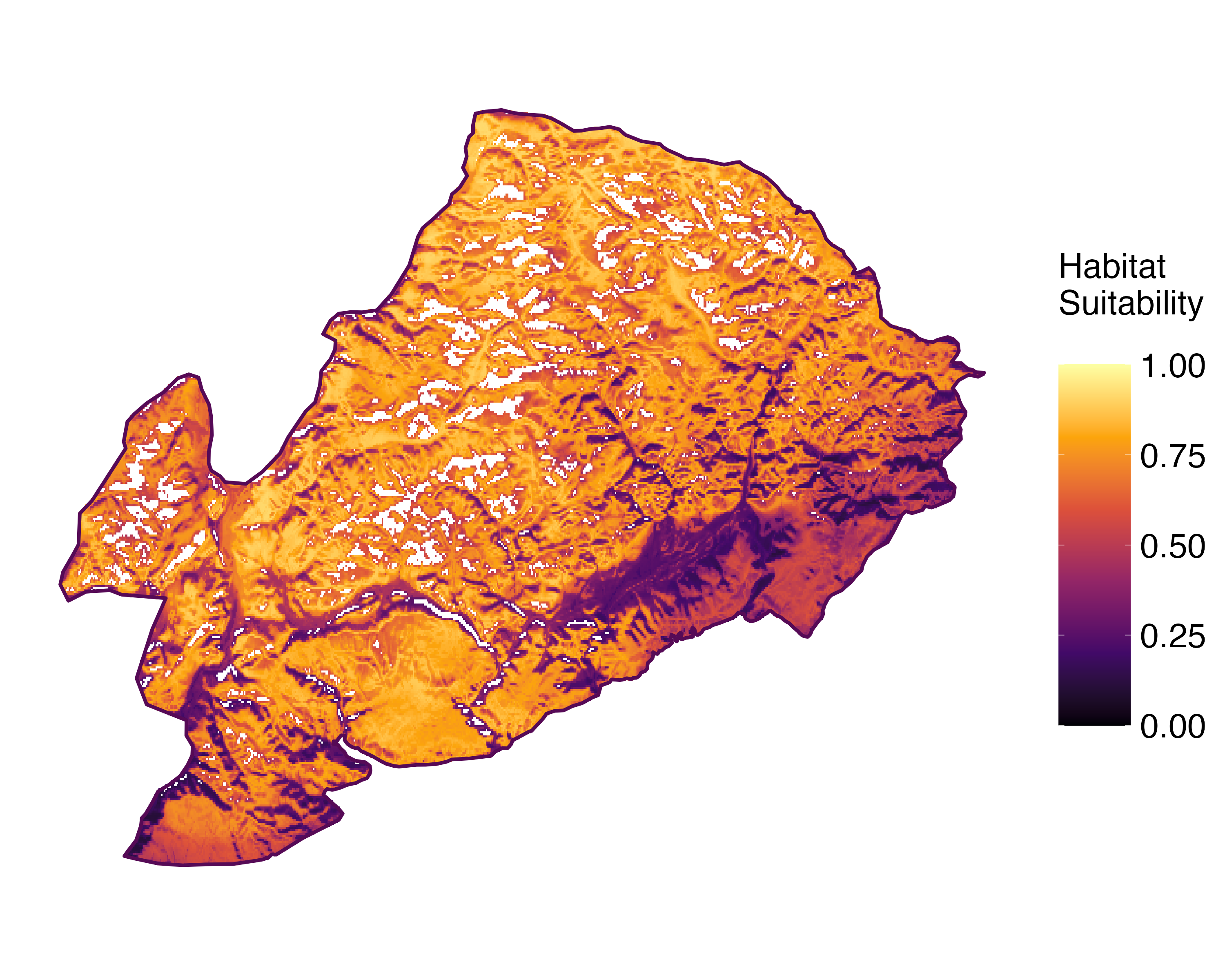 Current prediction (1981-2010)
Current prediction (1981-2010) Future prediction (2071-2100) SSP 1-2.6
Future prediction (2071-2100) SSP 1-2.6 Future prediction (2071-2100) SSP 5-8.5Predictive maps according to Francesconi et al. 2025
Future prediction (2071-2100) SSP 5-8.5Predictive maps according to Francesconi et al. 2025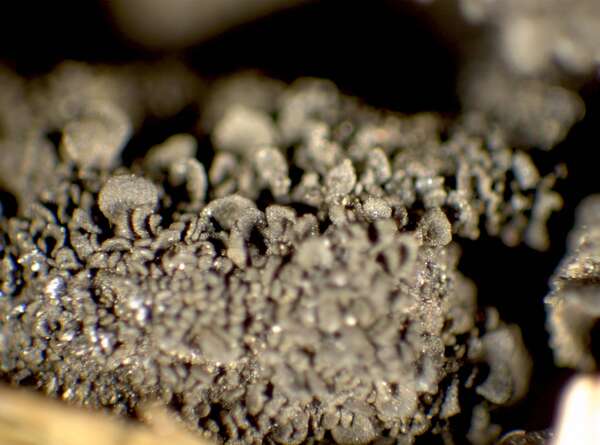
P.L. Nimis; Owner: Department of Life Sciences, University of Trieste
Herbarium: TSB (11346)
2001/12/04
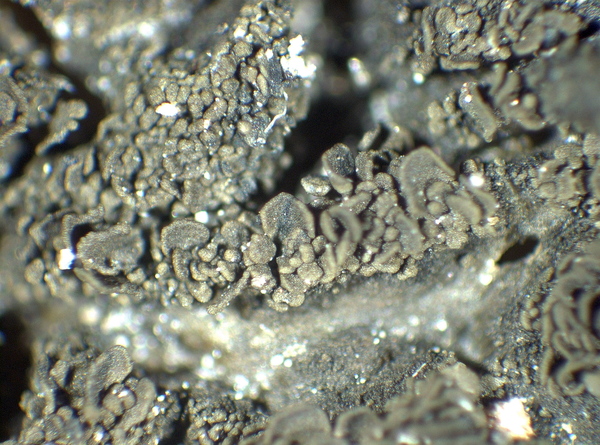
P.L.Nimis; Owner: Department of Life Sciences, University of Trieste
Herbarium: TSB (15001)
2008.03.06
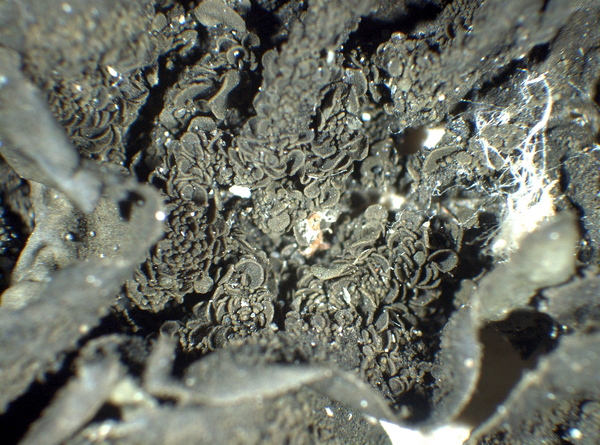
P.L.Nimis; Owner: Department of Life Sciences, University of Trieste
Herbarium: TSB (15001)
2008.03.06
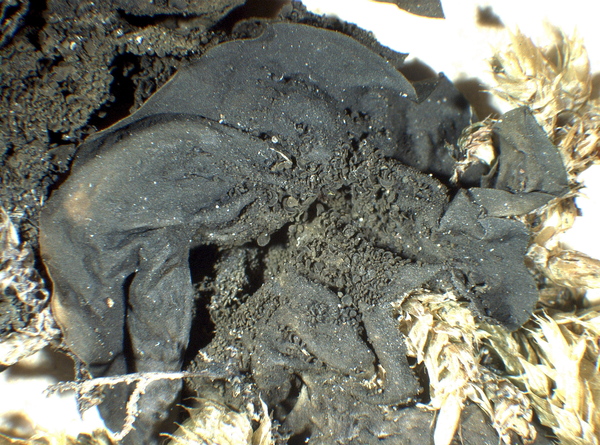
P.L.Nimis; Owner: Department of Life Sciences, University of Trieste
Herbarium: TSB (15001)
2008.03.06
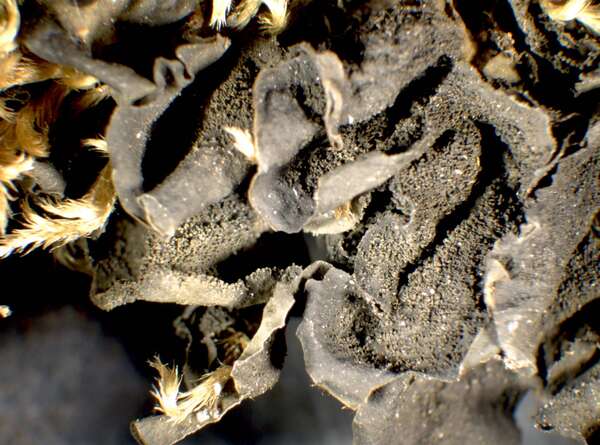
P.L. Nimis; Owner: Department of Life Sciences, University of Trieste
Herbarium: TSB (11346)
2001/12/04
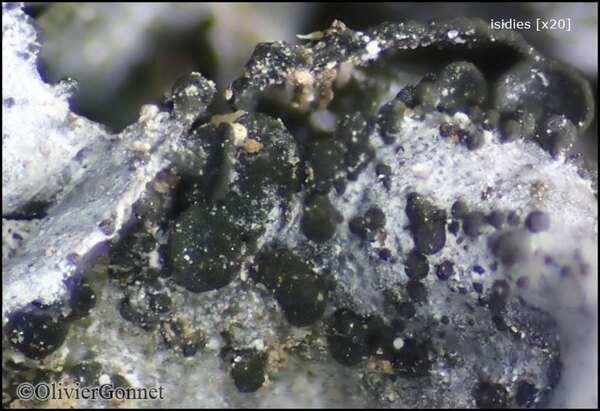
Courtesy Danièle et Olivier Gonnet - Source: https://www.afl-lichenologie.fr/Photos_AFL/Photos_AFL_C/Collema_flaccidum.htm; Owner: -
France, session AFL 2015 dans le Lot, Autoire
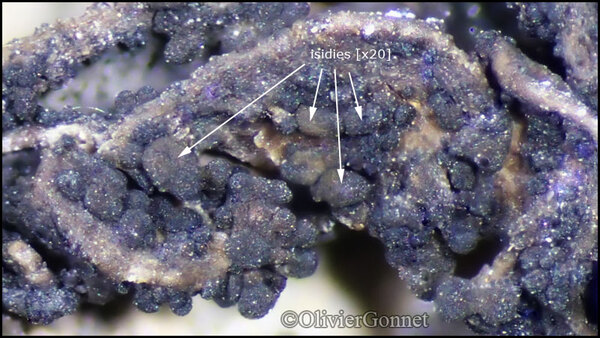
Courtesy Danièle et Olivier Gonnet - Source: https://www.afl-lichenologie.fr/Photos_AFL/Photos_AFL_C/Collema_flaccidum.htm; Owner: -
France, session AFL 2015 dans le Lot, Autoire
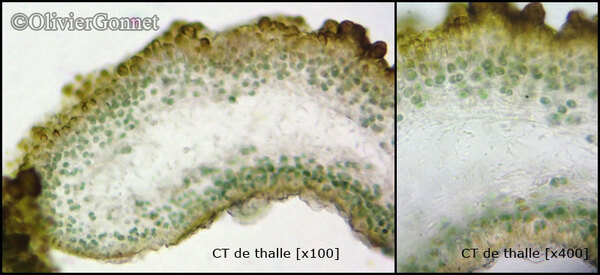
Courtesy Danièle et Olivier Gonnet - Source: https://www.afl-lichenologie.fr/Photos_AFL/Photos_AFL_C/Collema_flaccidum.htm; Owner: -
France, session AFL 2015 dans le Lot, Autoire
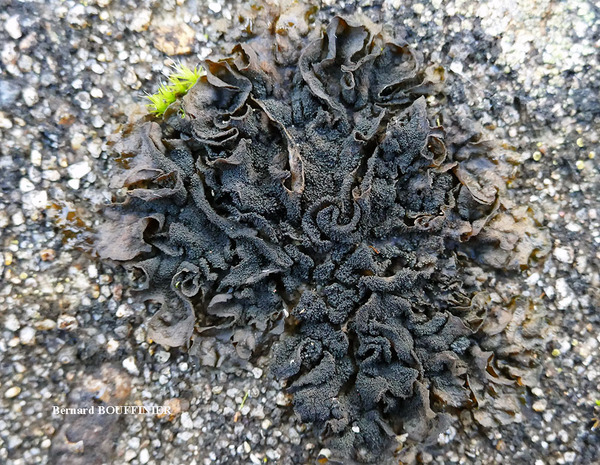
Bernard Bouffinier - Source: https://italic.units.it/index.php?procedure=images2&taxon=1129
France, Cranou
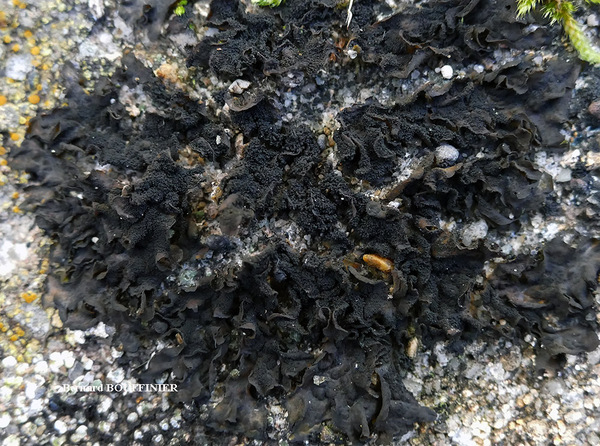
Bernard Bouffinier - Source: https://italic.units.it/index.php?procedure=images2&taxon=1129
France, Cranou
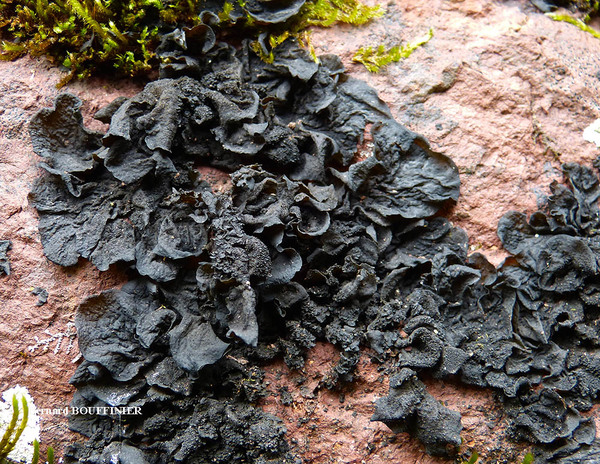
Bernard Bouffinier - Source: https://italic.units.it/index.php?procedure=images2&taxon=1129
France, Source de la Bidouze
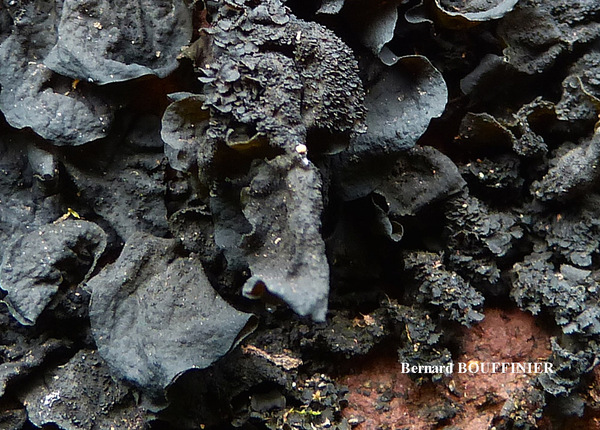
Bernard Bouffinier - Source: https://italic.units.it/index.php?procedure=images2&taxon=1129
France, Source de la Bidouze
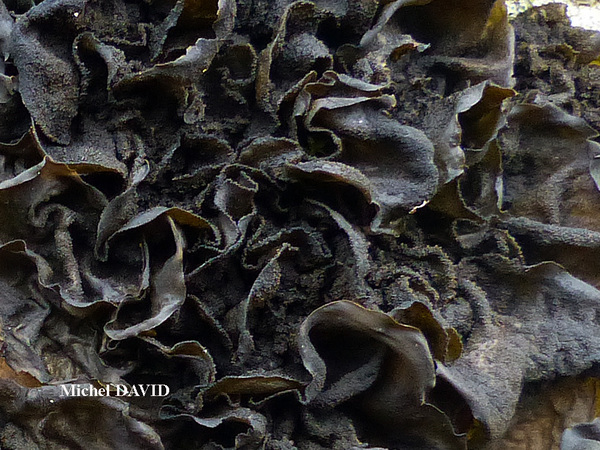
Michel David - Source: https://italic.units.it/index.php?procedure=images2&taxon=1129
France, Landevennec, Abbaye
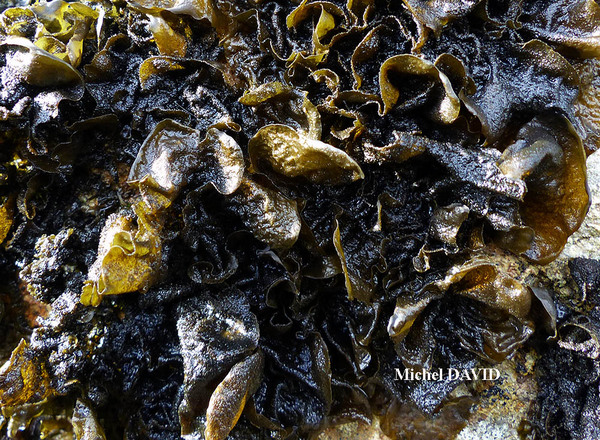
Michel David - Source: https://italic.units.it/index.php?procedure=images2&taxon=1129
France, Landevennec
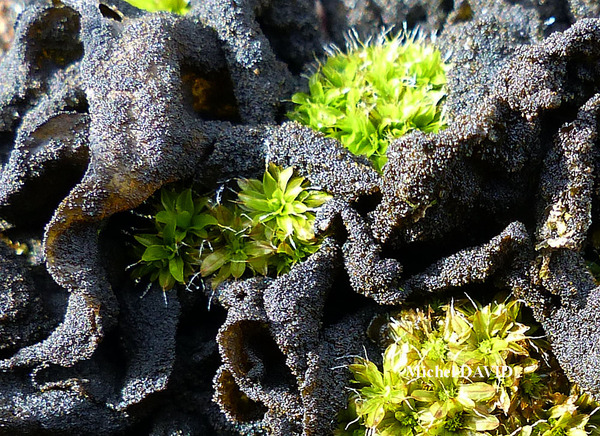
Michel David - Source: https://italic.units.it/index.php?procedure=images2&taxon=1129
France, Landevennec
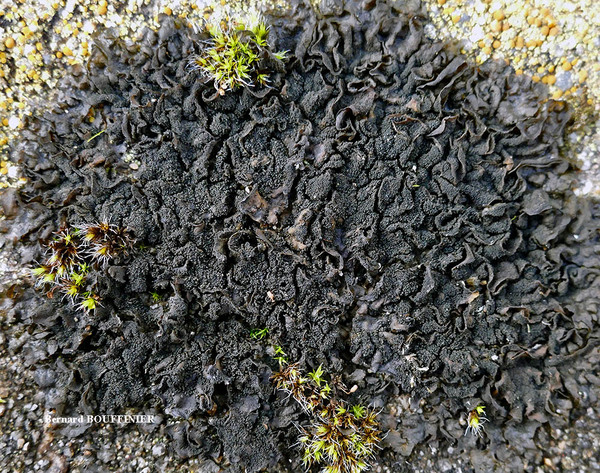
Bernard Bouffinier - Source: https://italic.units.it/index.php?procedure=images2&taxon=1129
France, Cranou
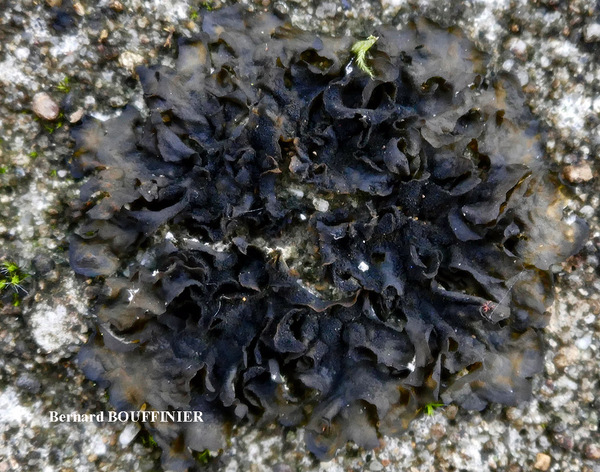
Bernard Bouffinier - Source: https://italic.units.it/index.php?procedure=images2&taxon=1129
France, Cranou

Ulrich Kirschbaum CC BY-SA 4.0 - Source: https://www.thm.de/lse/ulrich-kirschbaum/flechtenbilder
Austria; Alps: Kärnten.
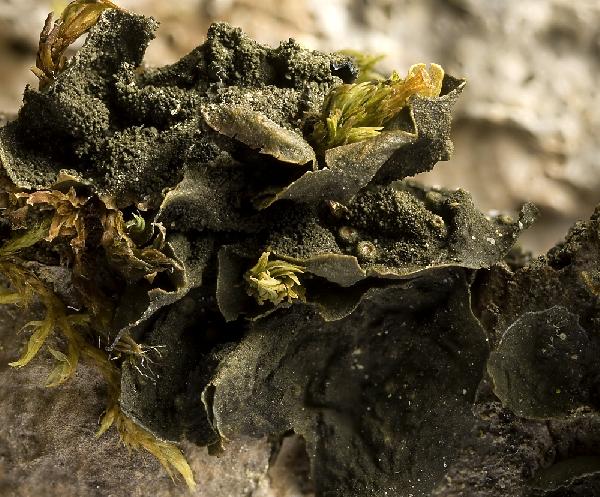
Ulrich Kirschbaum CC BY-SA 4.0 - Source: https://www.thm.de/lse/ulrich-kirschbaum/flechtenbilder
Austria; Alps: Kärnten.
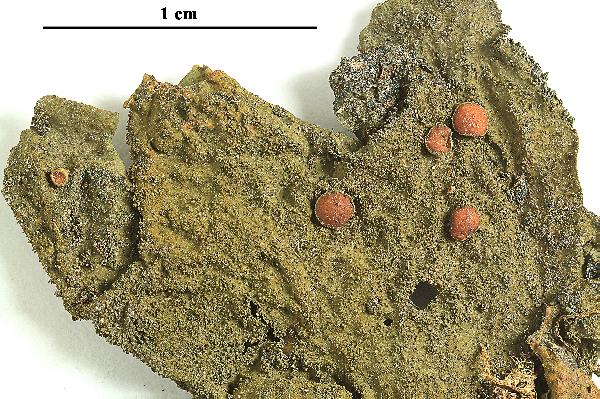
Felix Schumm - CC BY-SA 4.0
[VZ1257], Hungaria. Montes Matra, regio montis Agasvár, in vallerivuli Csörgö, 480 m. Ad saxa andesitica. Leg. G. Kiszely, T. Pócs et A.Vezda, 5.06.1974. - EX A. VEZDA: LICHENES SELECTI EXSICCATI NR.1257
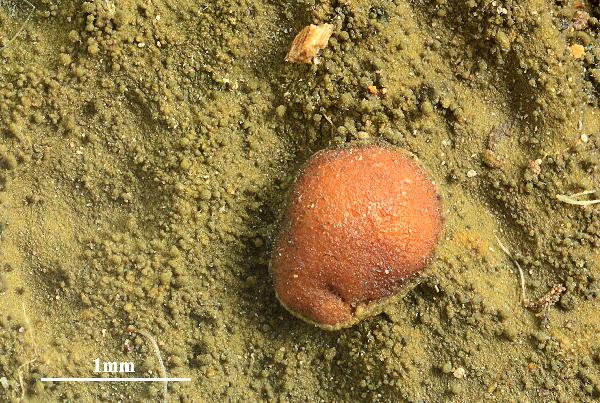
Felix Schumm - CC BY-SA 4.0
[VZ1257], Hungaria. Montes Matra, regio montis Agasvár, in vallerivuli Csörgö, 480 m. Ad saxa andesitica. Leg. G. Kiszely, T. Pócs et A.Vezda, 5.06.1974. - EX A. VEZDA: LICHENES SELECTI EXSICCATI NR.1257
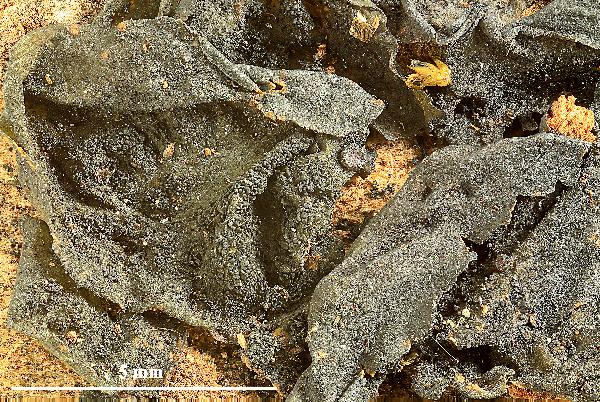
Felix Schumm - CC BY-SA 4.0
[VZR470], Germania. Bavaria, Berchtesgadener Land, Königsee, St.Bartholomä, 610 m. Ad corticem arboris (Tilia platyphyllos). Leg. &det. R. Türk & H. Wunder, 11.04.1989 - EX A. VEZDA: LICHENES RARIORES EXSICCATI NR. 470.
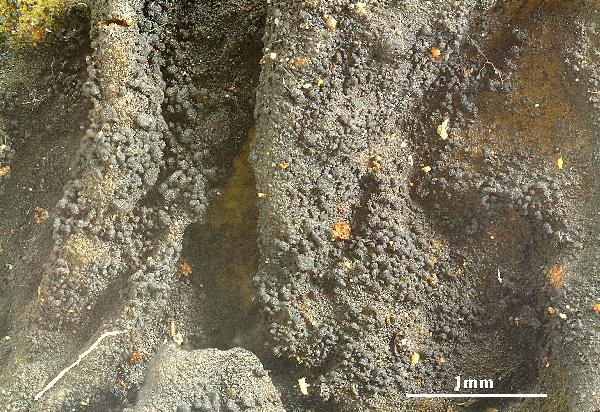
Felix Schumm - CC BY-SA 4.0
[VZR470], Germania. Bavaria, Berchtesgadener Land, Königsee, St.Bartholomä, 610 m. Ad corticem arboris (Tilia platyphyllos). Leg. &det. R. Türk & H. Wunder, 11.04.1989 - EX A. VEZDA: LICHENESRARIORES EXSICCATI NR. 470.
Growth form: Foliose, broad lobed
Substrata: bark and rocks
Photobiont: cyanobacteria, filamentous (e.g. Nostoc, Scytonema)
Reproductive strategy: mainly asexual, by isidia, or isidia-like structures (e.g. schizidia)
Most common in areas with a humid-warm climate (e.g. most of Tyrrenian Italy)
Commonnes-rarity: (info)
Alpine belt: absent
Subalpine belt: absent
Montane belt: very rare
Dry submediterranean belt: extremely rare
Humid submediterranean belt: rather common
Padanian area: absent
pH of the substrata:
| 1 | 2 | 3 | 4 | 5 |
Solar irradiation:
| 1 | 2 | 3 | 4 | 5 |
Aridity:
| 1 | 2 | 3 | 4 | 5 |
Eutrophication:
| 1 | 2 | 3 | 4 | 5 |
Poleotolerance:
| 0 | 1 | 2 | 3 |
Altitudinal distribution:
| 1 | 2 | 3 | 4 | 5 | 6 |
Rarity
absent
extremely rare
very rare
rare
rather rare
rather common
common
very common
extremely common
Loading data...
Occurrence data
Predictive map
 Current prediction (1981-2010)
Current prediction (1981-2010) Future prediction (2071-2100) SSP 1-2.6
Future prediction (2071-2100) SSP 1-2.6 Future prediction (2071-2100) SSP 5-8.5
Future prediction (2071-2100) SSP 5-8.5Predictive maps according to Francesconi et al. 2025

P.L. Nimis; Owner: Department of Life Sciences, University of Trieste
Herbarium: TSB (11346)
2001/12/04

P.L.Nimis; Owner: Department of Life Sciences, University of Trieste
Herbarium: TSB (15001)
2008.03.06

P.L.Nimis; Owner: Department of Life Sciences, University of Trieste
Herbarium: TSB (15001)
2008.03.06

P.L.Nimis; Owner: Department of Life Sciences, University of Trieste
Herbarium: TSB (15001)
2008.03.06

P.L. Nimis; Owner: Department of Life Sciences, University of Trieste
Herbarium: TSB (11346)
2001/12/04

Courtesy Danièle et Olivier Gonnet - Source: https://www.afl-lichenologie.fr/Photos_AFL/Photos_AFL_C/Collema_flaccidum.htm; Owner: -
France, session AFL 2015 dans le Lot, Autoire

Courtesy Danièle et Olivier Gonnet - Source: https://www.afl-lichenologie.fr/Photos_AFL/Photos_AFL_C/Collema_flaccidum.htm; Owner: -
France, session AFL 2015 dans le Lot, Autoire

Courtesy Danièle et Olivier Gonnet - Source: https://www.afl-lichenologie.fr/Photos_AFL/Photos_AFL_C/Collema_flaccidum.htm; Owner: -
France, session AFL 2015 dans le Lot, Autoire

Bernard Bouffinier - Source: https://italic.units.it/index.php?procedure=images2&taxon=1129
France, Cranou

Bernard Bouffinier - Source: https://italic.units.it/index.php?procedure=images2&taxon=1129
France, Cranou

Bernard Bouffinier - Source: https://italic.units.it/index.php?procedure=images2&taxon=1129
France, Source de la Bidouze

Bernard Bouffinier - Source: https://italic.units.it/index.php?procedure=images2&taxon=1129
France, Source de la Bidouze

Michel David - Source: https://italic.units.it/index.php?procedure=images2&taxon=1129
France, Landevennec, Abbaye

Michel David - Source: https://italic.units.it/index.php?procedure=images2&taxon=1129
France, Landevennec

Michel David - Source: https://italic.units.it/index.php?procedure=images2&taxon=1129
France, Landevennec

Bernard Bouffinier - Source: https://italic.units.it/index.php?procedure=images2&taxon=1129
France, Cranou

Bernard Bouffinier - Source: https://italic.units.it/index.php?procedure=images2&taxon=1129
France, Cranou

Ulrich Kirschbaum CC BY-SA 4.0 - Source: https://www.thm.de/lse/ulrich-kirschbaum/flechtenbilder
Austria; Alps: Kärnten.

Ulrich Kirschbaum CC BY-SA 4.0 - Source: https://www.thm.de/lse/ulrich-kirschbaum/flechtenbilder
Austria; Alps: Kärnten.

Felix Schumm - CC BY-SA 4.0
[VZ1257], Hungaria. Montes Matra, regio montis Agasvár, in vallerivuli Csörgö, 480 m. Ad saxa andesitica. Leg. G. Kiszely, T. Pócs et A.Vezda, 5.06.1974. - EX A. VEZDA: LICHENES SELECTI EXSICCATI NR.1257

Felix Schumm - CC BY-SA 4.0
[VZ1257], Hungaria. Montes Matra, regio montis Agasvár, in vallerivuli Csörgö, 480 m. Ad saxa andesitica. Leg. G. Kiszely, T. Pócs et A.Vezda, 5.06.1974. - EX A. VEZDA: LICHENES SELECTI EXSICCATI NR.1257

Felix Schumm - CC BY-SA 4.0
[VZR470], Germania. Bavaria, Berchtesgadener Land, Königsee, St.Bartholomä, 610 m. Ad corticem arboris (Tilia platyphyllos). Leg. &det. R. Türk & H. Wunder, 11.04.1989 - EX A. VEZDA: LICHENES RARIORES EXSICCATI NR. 470.



